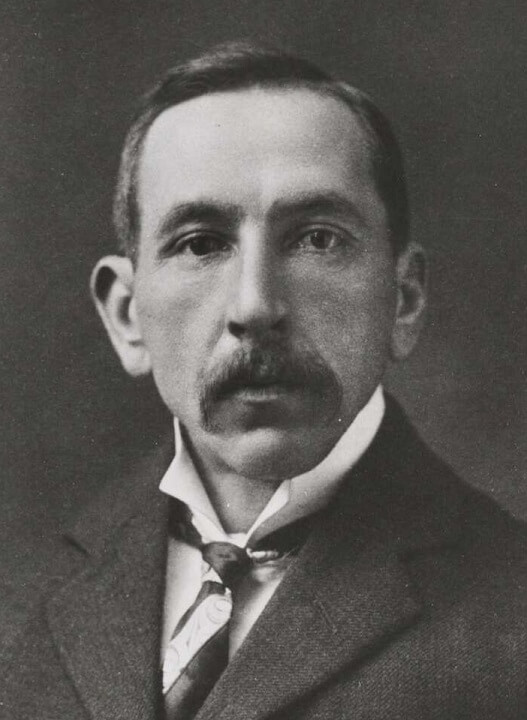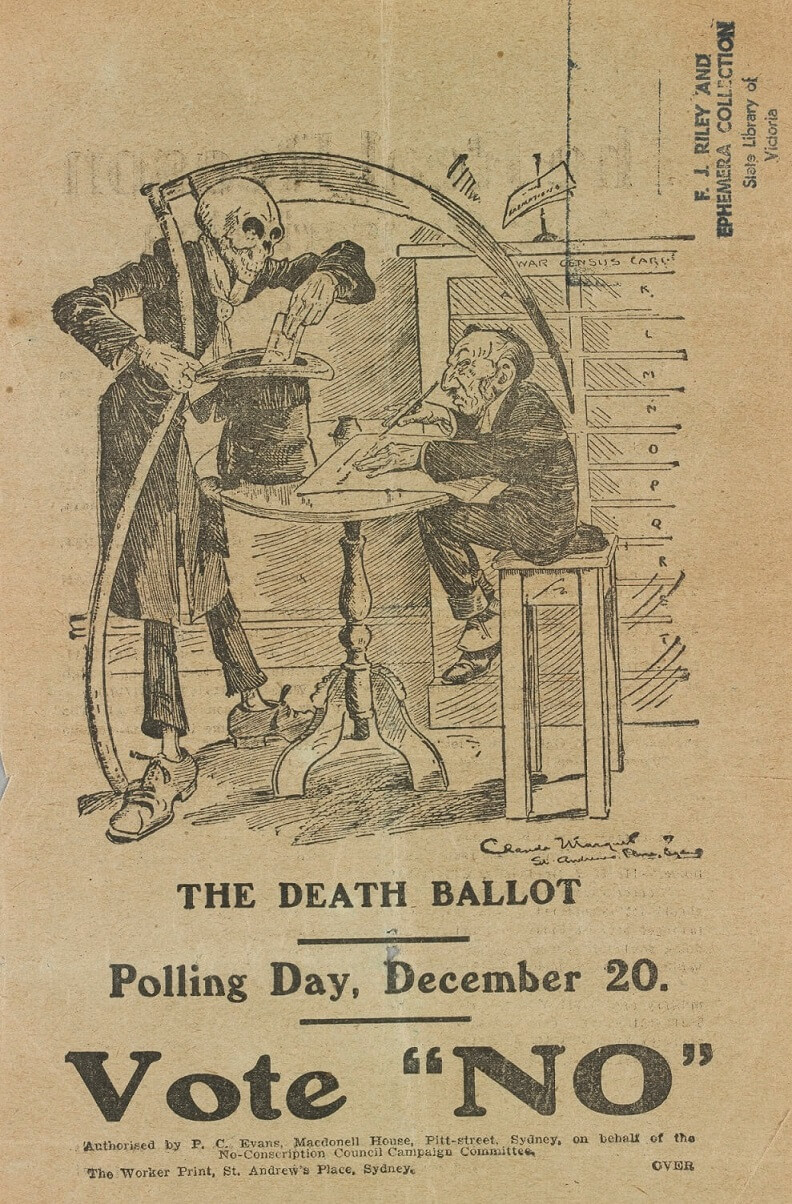William Morris (Billy) Hughes, was Federal Attorney General, then Prime Minister of Australia from 1915-1923. He was a strong advocate of Conscription and oversaw both referendums on the issue.
Hughes was born in England, the son of a Welsh carpenter and an English domestic servant. He trained as a pupil teacher and taught at a school in Westminster, where he also joined a volunteer battalion of the Royal Fusilliers. In October 1884 he migrated to Queensland as an assisted migrant. After two years in Queensland he moved to Sydney, where eventually he opened a small shop. He married Elizabeth Cutts, his landlady's daughter, in 1886.
Hughes was active in the labour movement, initially with the Amalgamated Shearers' Union and later with the Sydney and Melbourne wharf labourers. He was first elected to the New South Wales Parliament in 1894, then as a Labor member moved to the Commonwealth Parliament in 1901, despite his earlier opposition to Federation. He qualified for the Bar in November 1903 and was considered a skilled parliamentarian, a persuasive speaker and a lively writer. When Labor Prime Minister Andrew Fisher resigned from ill health in 1915, Hughes was elected unopposed. He served as Prime Minister throughout the war and until 1923.
After a visit to Britain (via New Zealand and Canada) in 1916 Hughes returned convinced of the need for conscription. He was passionately committed to the war effort and was determined to provide support for Australia's troops at the front, but he also saw the strategic importance to Australia's interests after the war in maintaining a strong military presence for its duration. The opposition to conscription of both the Labor caucus and much of the union movement meant that it was impossible to introduce conscription by legislation, but Hughes hoped that the Australian people would give him the mandate he needed at a referendum. In the bitter debate that followed the announcement of the referendum, Hughes was indefatigable in campaigning. In addition to many speaking engagements, he made a film supporting the cause, which was sent to cinemas around the country. The film can be seen here. He was bitterly disappointed when the first referendum was lost in October 1916.
The political result of the failed referendum attempt was as bitter as the debate itself. Hughes was immediately expelled from the Labor Party and from his union memberships. With a group of supporters from the caucus he formed a coalition government with his Liberal opponents. This later became a new party - the 'Win the War' or Nationalist Party. At an election held in May 1917 Hughes won a sweeping victory.
Although he had promised not to reopen the conscription debate, falling recruitment numbers prompted Hughes to make a second attempt at a referendum in 1917. An even more bitter debate resulted in a second loss by a higher margin. Hughes resigned briefly as Prime Minister, but resumed the position when no other candidate was able to command a majority. He continued as Prime Minister until 1923, representing Australia vigorously at the post-war peace conferences. Although never again Prime Minister, Hughes held office in various ministries, first with the United Australia Party and later in the Liberal Party. Small in stature (he stood only five feet six inches tall) and mercurial in temperament, Hughes inspired both loyalty and loathing in equal measure. He was still a Member of Parliament when he died in 1952 at the age of 90, and was survived by his second wife Mary and six of his seven children.
'The Death Ballot', anti-conscription cartoon, December 1917.
Billy Hughes was a gift to the cartoonist. Small and slight with a large head, Hughes was often presented as a gnome-like figure. Here left-wing cartoonist Claude Marquet associates Hughes with the figure of Death in his support for conscription.
Courtesy State Library Victoria


